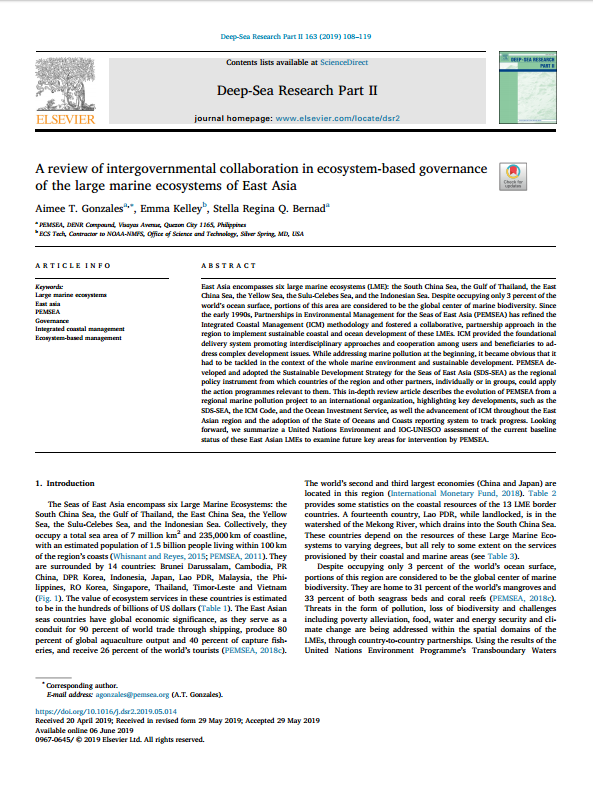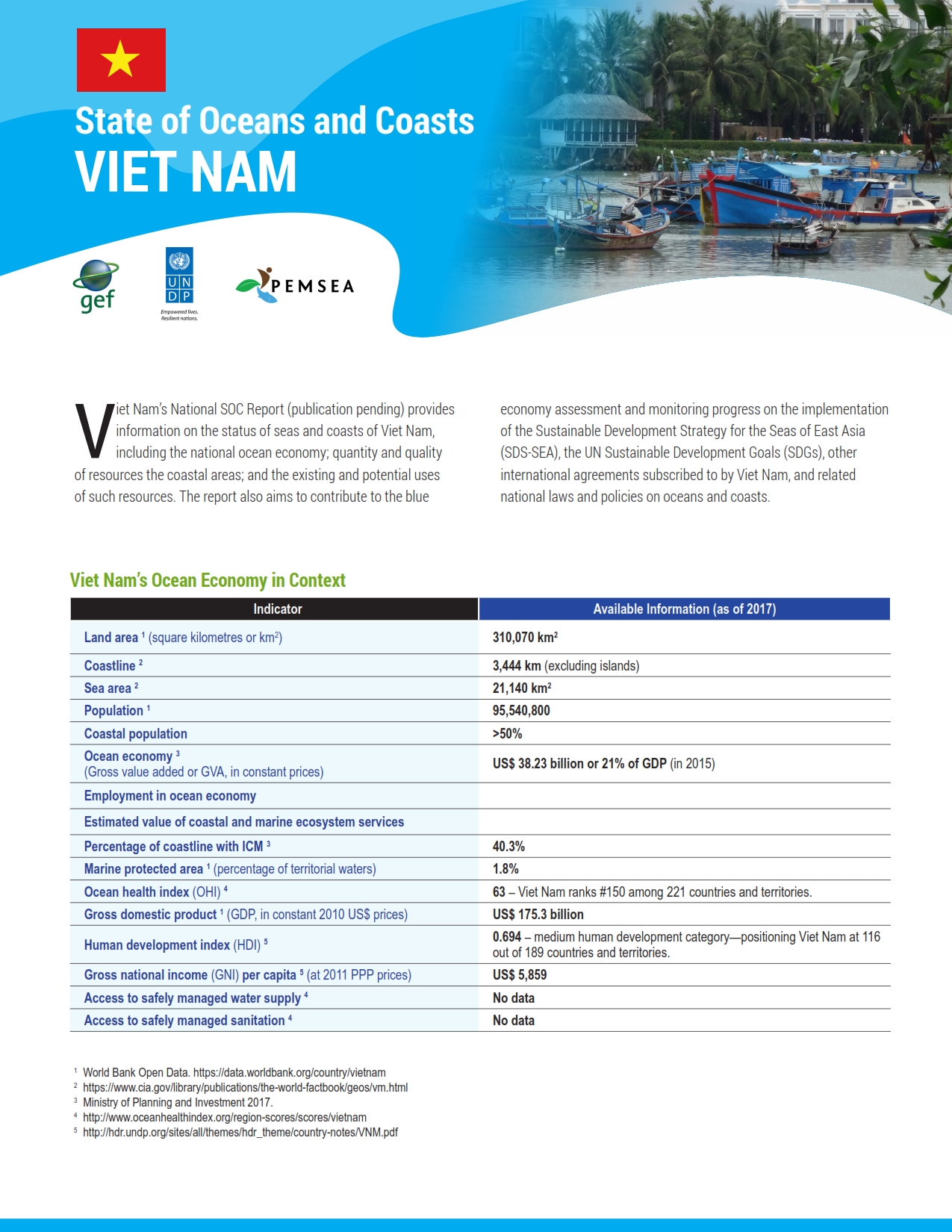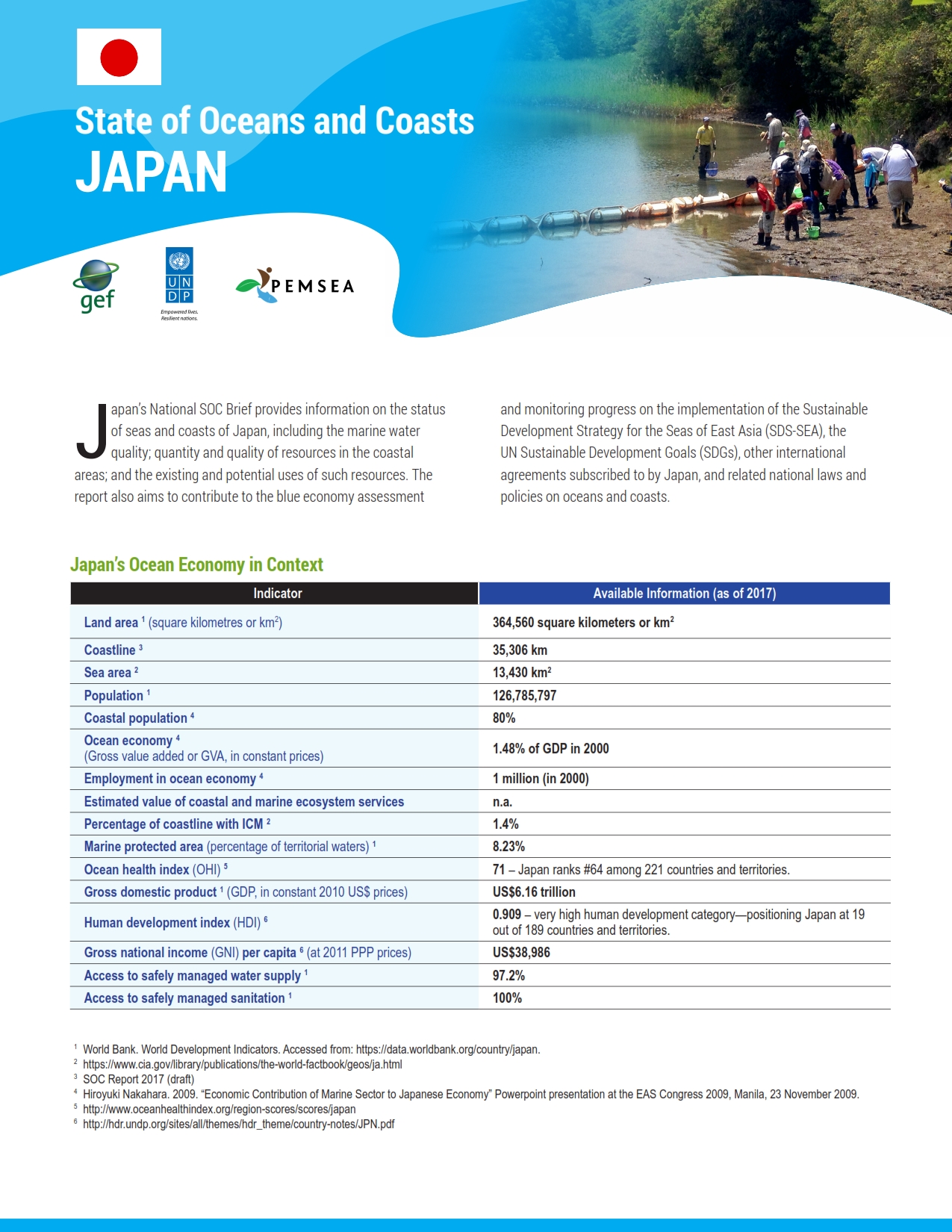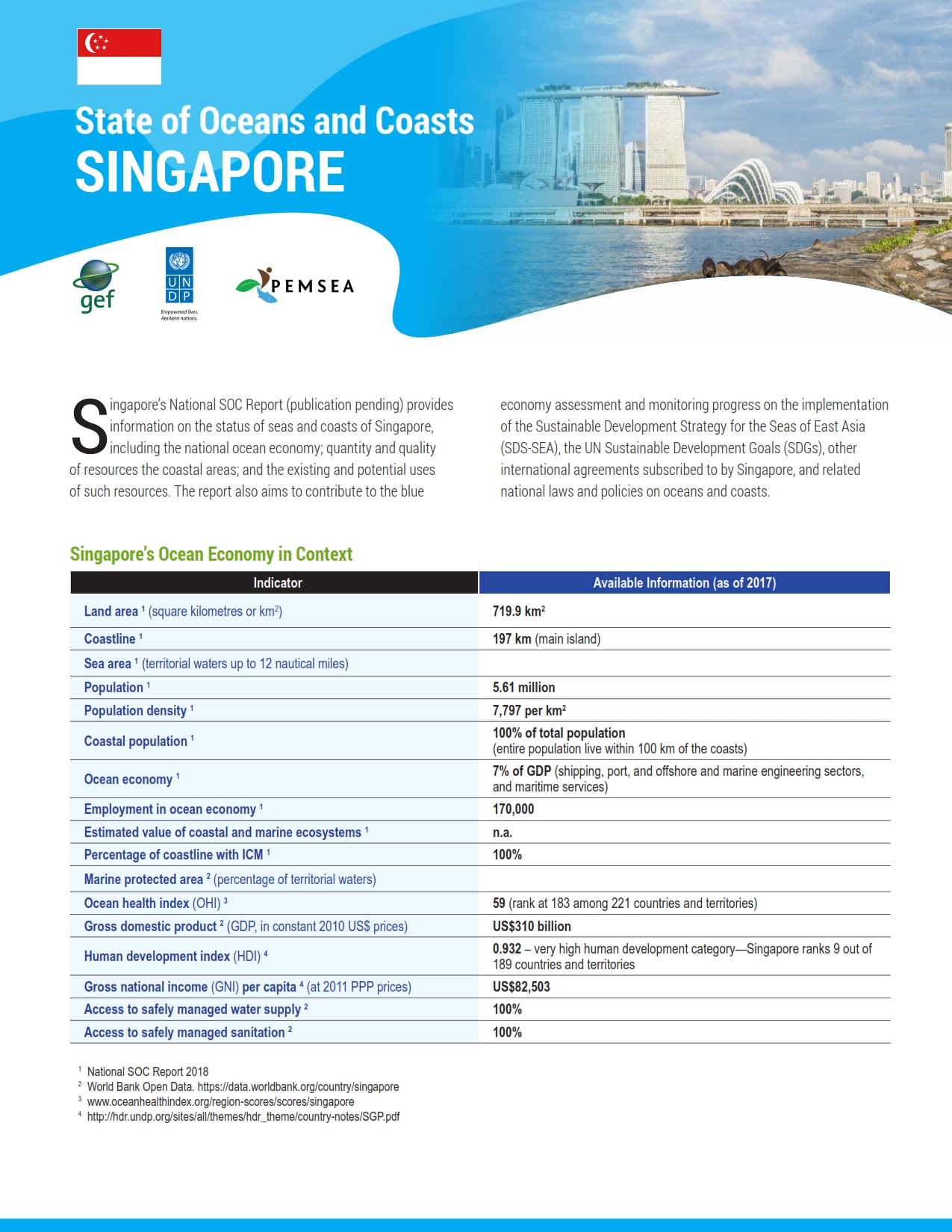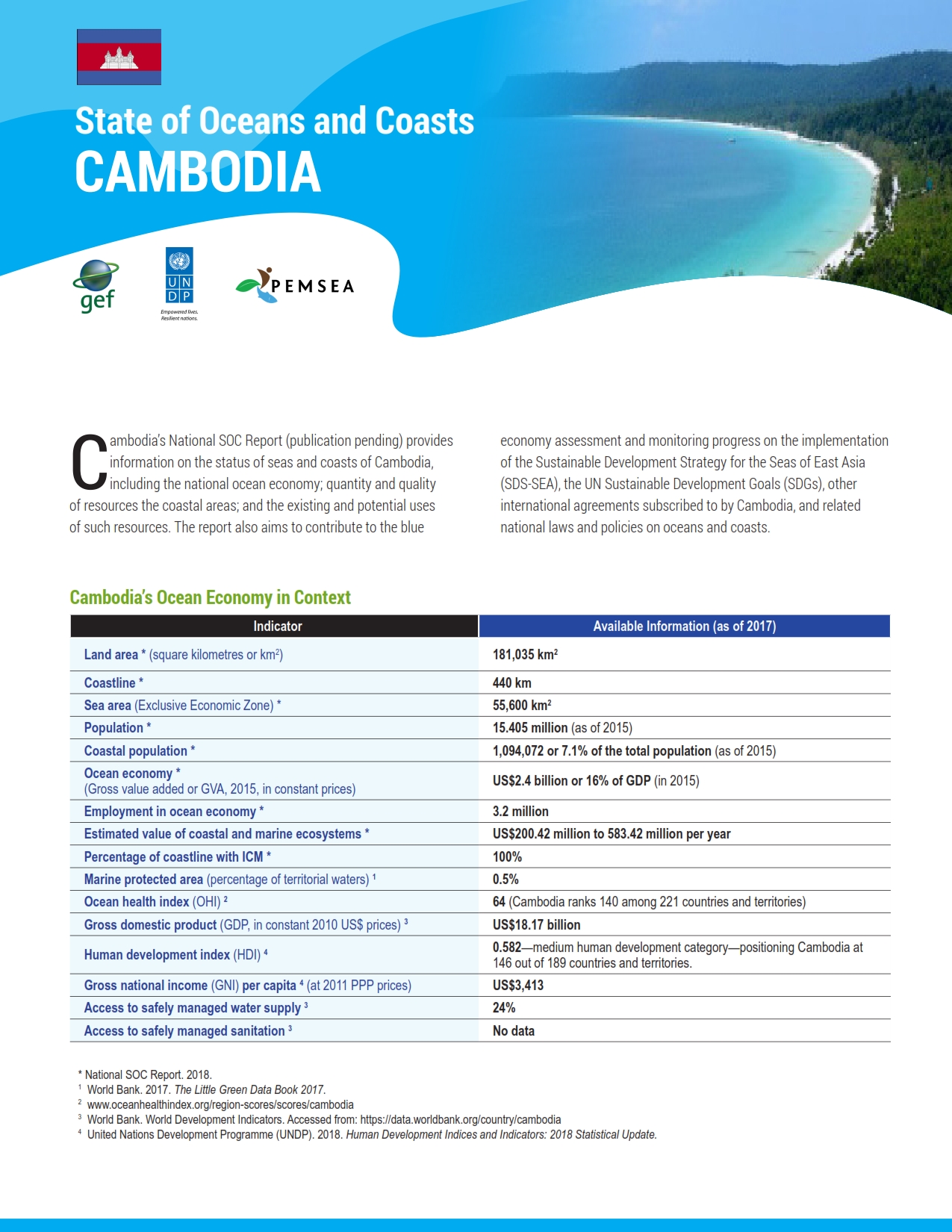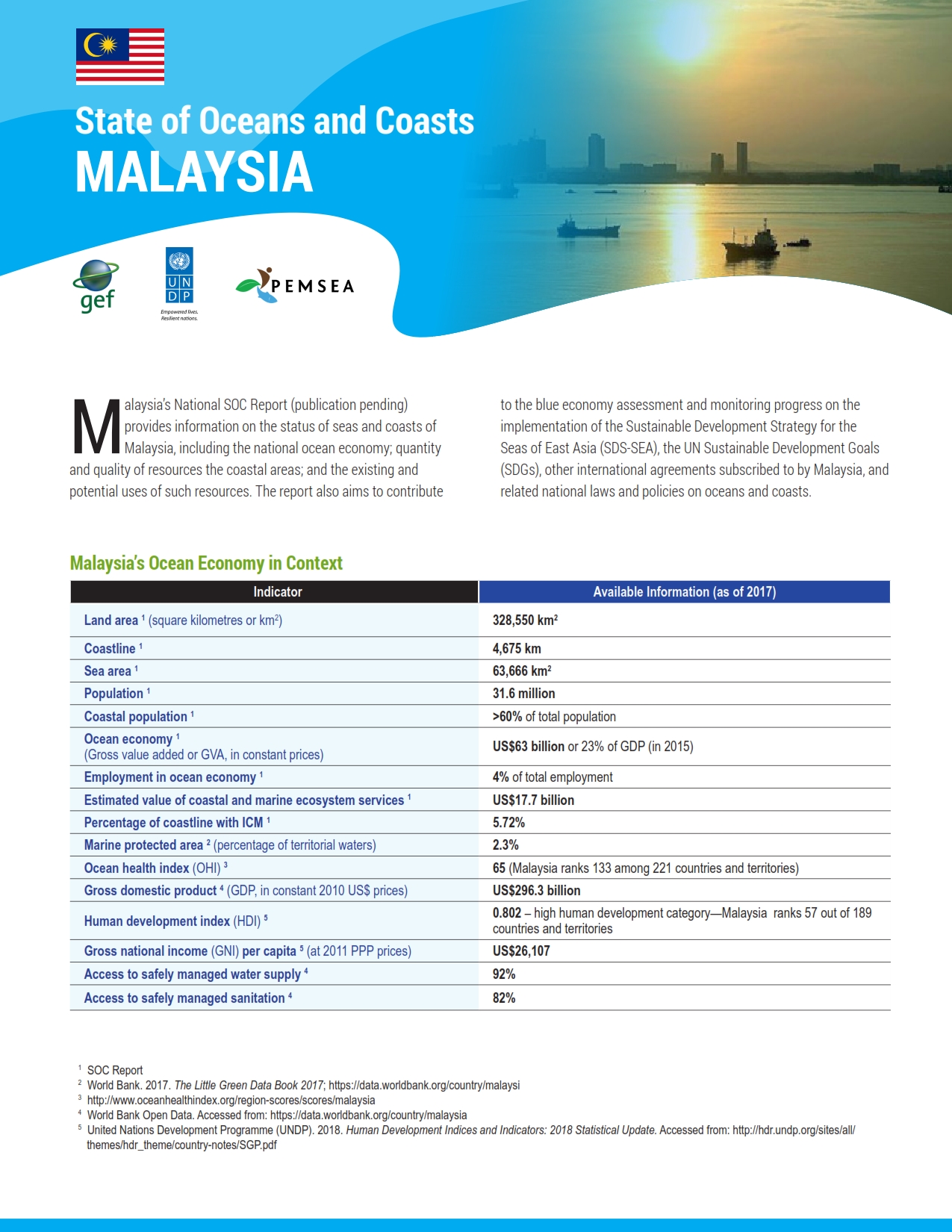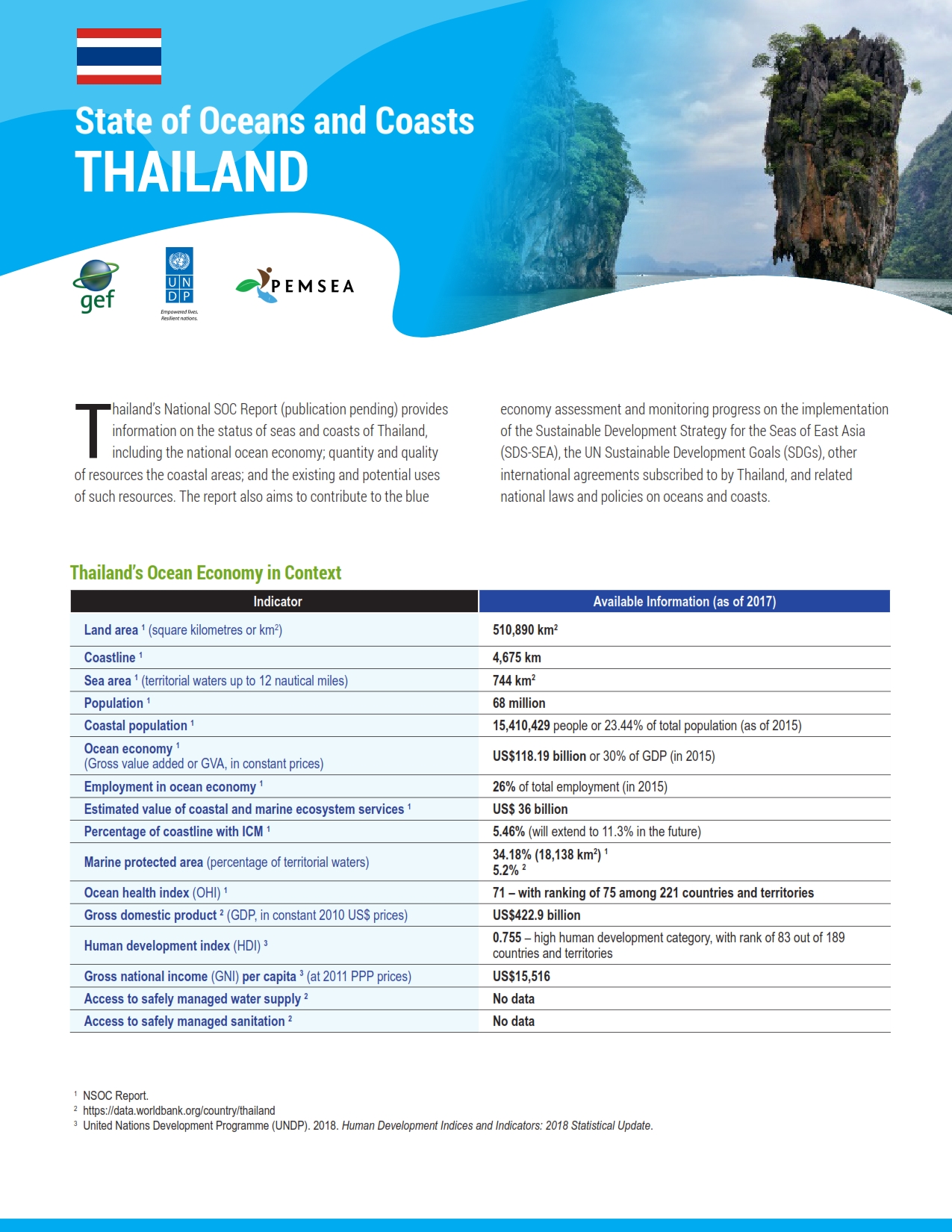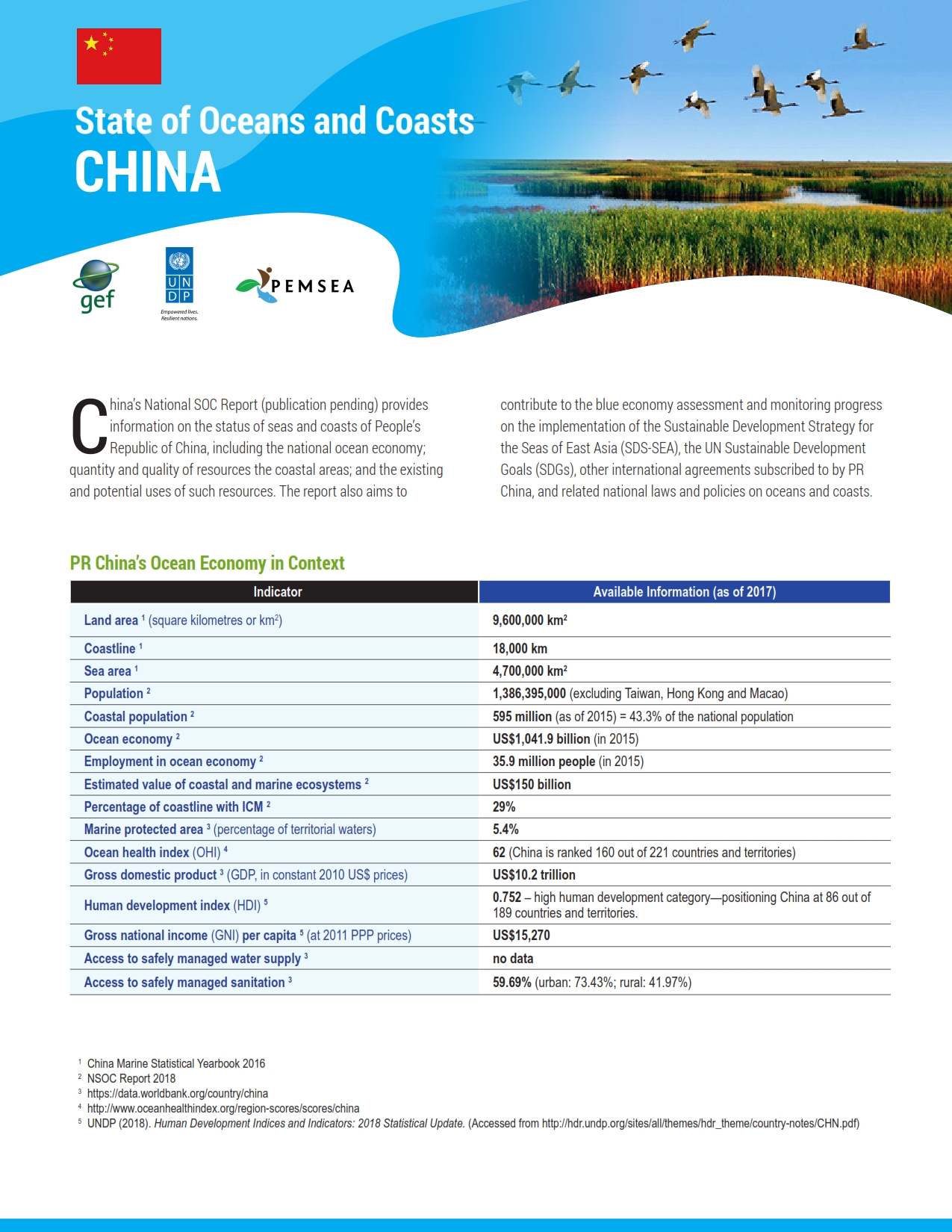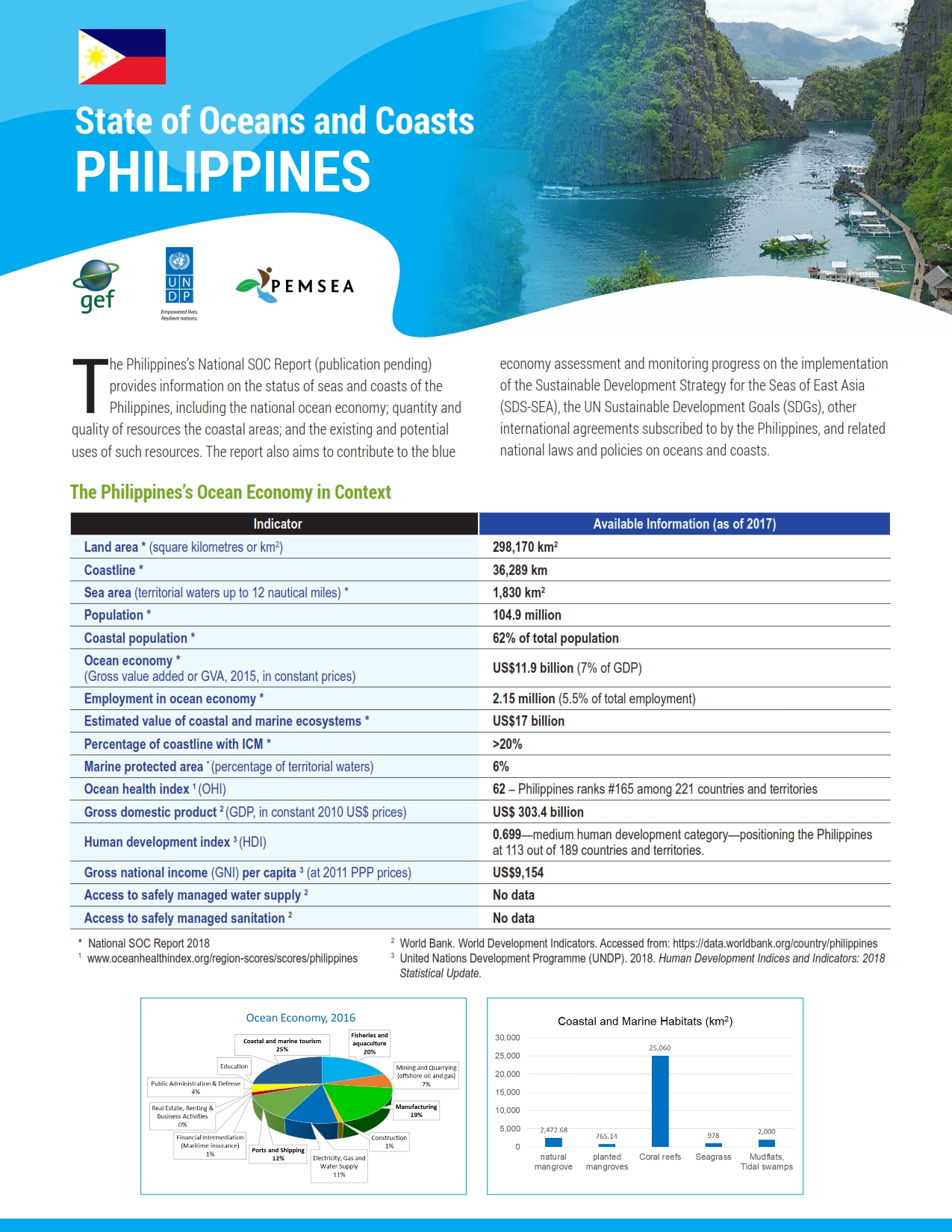
Breadcrumb
A review of intergovernmental collaboration in ecosystem-based governance of the large marine ecosystems of East Asia
East Asia encompasses six large marine ecosystems (LME): the South China Sea, the Gulf of Thailand, the East China Sea, the Yellow Sea, the Sulu-Celebes Sea, and the Indonesian Sea. Despite occupying only 3 percent of the world’s ocean surface, portions of this area are considered to be the global center of marine biodiversity. Since the early 1990s, Partnerships in Environmental Management for the Seas of East Asia (PEMSEA) has refined the Integrated Coastal Management (ICM) methodology and fostered a collaborative, partnership approach in the region to implement sustainable coastal and ocean development of these LMEs. ICM provided the foundational delivery system promoting interdisciplinary approaches and cooperation among users and beneficiaries to address complex development issues. While addressing marine pollution at the beginning, it became obvious that it had to be tackled in the context of the whole marine environment and sustainable development. PEMSEA developed and adopted the Sustainable Development Strategy for the Seas of East Asia (SDS-SEA) as the regional policy instrument from which countries of the region and other partners, individually or in groups, could apply the action programmes relevant to them. This in-depth review article describes the evolution of PEMSEA from a regional marine pollution project to an international organization, highlighting key developments, such as the SDS-SEA, the ICM Code, and the Ocean Investment Service, as well the advancement of ICM throughout the East Asian region and the adoption of the State of Oceans and Coasts reporting system to track progress. Looking forward, we summarize a United Nations Environment and IOC-UNESCO assessment of the current baseline status of these East Asian LMEs to examine future key areas for intervention by PEMSEA.
State of Oceans and Coasts of Viet Nam
Viet Nam’s National SOC Report provides information on the status of seas and coasts of Viet Nam, including the national ocean economy; quantity and quality of resources the coastal areas; and the existing and potential uses of such resources. The report also aims to contribute to the blue economy assessment and monitoring progress on the implementation of the Sustainable Development Strategy for the Seas of East Asia (SDS-SEA), the UN Sustainable Development Goals (SDGs), other international agreements subscribed to by Viet Nam, and related national laws and policies on oceans and coasts.
State of Oceans and Coasts of Japan
Japan’s National SOC Brief provides information on the status of seas and coasts of Japan, including the marine water quality; quantity and quality of resources in the coastal areas; and the existing and potential uses of such resources. The report also aims to contribute to the blue economy assessment and monitoring progress on the implementation of the Sustainable Development Strategy for the Seas of East Asia (SDS-SEA), the UN Sustainable Development Goals (SDGs), other international agreements subscribed to by Japan, and related national laws and policies on oceans and coasts.
State of Oceans and Coasts of Singapore
Singapore’s National SOC Report provides information on the status of seas and coasts of Singapore, including the national ocean economy; quantity and quality of resources the coastal areas; and the existing and potential uses of such resources. The report also aims to contribute to the blue economy assessment and monitoring progress on the implementation of the Sustainable Development Strategy for the Seas of East Asia (SDS-SEA), the UN Sustainable Development Goals (SDGs), other international agreements subscribed to by Singapore, and related national laws and policies on oceans and coasts.
State of Oceans and Coasts of Cambodia
Cambodia’s National SOC Report provides information on the status of seas and coasts of Cambodia, including the national ocean economy; quantity and quality of resources the coastal areas; and the existing and potential uses of such resources. The report also aims to contribute to the blue economy assessment and monitoring progress on the implementation of the Sustainable Development Strategy for the Seas of East Asia (SDS-SEA), the UN Sustainable Development Goals (SDGs), other international agreements subscribed to by Cambodia, and related national laws and policies on oceans and coasts.
State of Oceans and Coasts of Malaysia
Malaysia’s National SOC Report provides information on the status of seas and coasts of Malaysia, including the national ocean economy; quantity and quality of resources the coastal areas; and the existing and potential uses of such resources. The report also aims to contribute to the blue economy assessment and monitoring progress on the implementation of the Sustainable Development Strategy for the Seas of East Asia (SDS-SEA), the UN Sustainable Development Goals (SDGs), other international agreements subscribed to by Malaysia, and related national laws and policies on oceans and coasts.
State of Oceans and Coasts of Thailand
Thailand’s National SOC Report provides information on the status of seas and coasts of Singapore, including the national ocean economy; quantity and quality of resources the coastal areas; and the existing and potential uses of such resources. The report also aims to contribute to the blue economy assessment and monitoring progress on the implementation of the Sustainable Development Strategy for the Seas of East Asia (SDS-SEA), the UN Sustainable Development Goals (SDGs), other international agreements subscribed to by Thailand, and related national laws and policies on oceans and coasts.
State of Oceans and Coasts of China
China’s National SOC Report provides information on the status of seas and coasts of People’s Republic of China, including the national ocean economy; quantity and quality of resources the coastal areas; and the existing and potential uses of such resources. The report also aims to contribute to the blue economy assessment and monitoring progress on the implementation of the Sustainable Development Strategy for the Seas of East Asia (SDS-SEA), the UN Sustainable Development Goals (SDGs), other international agreements subscribed to by PR China, and related national laws and policies on oceans and coasts.
State of Oceans and Coasts of the Philippines
The Philippines’s National SOC Report provides information on the status of seas and coasts of the Philippines, including the national ocean economy; quantity and quality of resources the coastal areas; and the existing and potential uses of such resources. The report also aims to contribute to the blue economy assessment and monitoring progress on the implementation of the Sustainable Development Strategy for the Seas of East Asia (SDS-SEA), the UN Sustainable Development Goals (SDGs), other international agreements subscribed to by the Philippines, and related national laws and policies on oceans and coasts.
